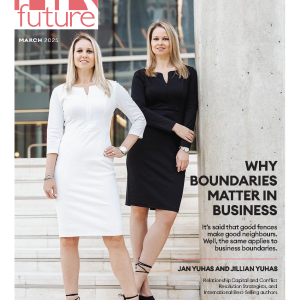Keeping teams on the same page is hard enough when everyone’s in the same office. But it becomes an even bigger challenge when the team is spread across different cities, time zones, or even countries. That said, how do you make sure everyone stays focused on what matters, like your company’s strategic goals?
It starts with clear communication, the right tools, and regular check-ins. Maintaining alignment doesn’t have to be difficult, regardless of whether your team works in a hybrid environment or is entirely remote. Let’s look at some simple, practical ways to help your distributed teams stay connected and moving in the same direction.
Use the Right Collaboration and Goal-Tracking Tools
One of the easiest ways to keep remote teams focused is through collaboration and goal-tracking tools. When people work in different locations, it’s easy for things to get lost in emails or forgotten in chat threads. That’s why having one place where everyone can track progress, deadlines, and responsibilities makes a big difference.
For example, imagine you’re running a hotel group with teams working in different regions. You have marketing teams, operations teams, and supplier managers all working on different parts of the business.
Without a shared system, updates can get messy. This problem can be easily remedied by project management tools like Trello, Asana, or Monday.com. These tools allow everyone to see what’s being worked on, who’s working on what, and when it should be delivered.
If your team also manages multiple vendors, supplier management software can be a game-changer. It keeps all supplier information, communication, and performance tracking in one place. This way, your team doesn’t waste time searching for updates or checking old emails. Everything is organised and easy to access, regardless of where your team works.
The right tools don’t just make work easier. They help everyone stay on track, work smarter, and focus on what matters.
Start With Clear, Communicated Goals
Starting with clear, well-communicated goals is essential for aligning distributed teams. Everyone can focus their efforts effectively when they understand the organisation’s priorities.
Research indicates that over 80% of high-performing companies invest in defining and living their purpose, beginning with setting organisational goals.
To ensure these goals are visible across all levels, consider the following best practices:
- Document and Share: Utilise centralised platforms like shared dashboards or internal wikis to make goals accessible to all team members.
- Regular Updates: Hold consistent meetings or send updates to discuss progress and realign objectives as needed.
- Visual Aids: Incorporate charts or progress bars to provide a clear picture of goal attainment.
By implementing these tactics, organizations can promote transparency and ensure that all team members, regardless of location, are aligned with the same goals.
Build Regular Communication Rhythms
Keeping a distributed team aligned isn’t just about setting goals but maintaining consistent communication. Regular weekly or monthly check-ins are vital for reviewing progress and addressing challenges. These meetings ensure everyone stays informed and connected, fostering a sense of unity despite physical distances.
Team meetings provide a platform for collaborative discussions, while one-on-ones provide opportunities for individual feedback and support. Both are essential for building trust and ensuring team members feel heard and valued.
Asynchronous updates, like shared documents or project management tools, allow team members to stay informed at their convenience. This flexibility accommodates different time zones and work schedules, promoting inclusivity and efficiency.
Regular synchronous meetings combined with asynchronous communication techniques allow teams to stay in sync, solve problems quickly, and help each other succeed no matter where they are.
Encourage Cross-Department Collaboration
In many organisations, departments operate in isolation, leading to communication gaps and inefficiencies. Encouraging cross-department collaboration can bridge these divides, fostering a more cohesive and productive work environment.
When teams from different departments collaborate on shared projects, they bring diverse perspectives and expertise to the table. This synergy not only enhances problem-solving but also promotes innovation. For instance, integrating marketing and product development insights can lead to offerings that better meet customer needs.
Moreover, cross-functional initiatives help align departmental goals with the organisation’s objectives. Teams that collaborate develop a shared understanding of priorities, cut down on duplication, and make sure resources are used efficiently.
This alignment is crucial for organisations aiming to remain agile and responsive in today’s fast-paced business landscape. Regular interdepartmental meetings and collaborative platforms can strengthen these connections, ensuring continuous communication and mutual support across team
Recognise and Celebrate Team Wins
Recognising and celebrating team wins isn’t just a kind acknowledgement. It’s a powerful way to boost morale and keep everyone focused. When employees feel appreciated, they’re more engaged, motivated, and likely to go the extra mile.
Organisations with formal recognition programs have 31% less voluntary turnover and are 12 times more likely to have strong business outcomes.
Celebrations don’t have to be grand. Simple acts like a shout-out in a meeting, a thank-you note, or a team lunch can have a significant impact on the team’s morale. These moments reinforce company values and show employees their contributions matter.
Moreover, celebrating progress helps align team efforts with strategic priorities. It creates a sense of shared purpose and keeps everyone moving in the same direction.
In today’s fast-paced work environment, taking the time to acknowledge achievements can lead to increased productivity, improved team culture, and higher employee satisfaction.
So, don’t wait for the big wins. Celebrate the small victories along the way. They contribute to long-term success.
Alignment Starts with Intentional Effort
Keeping a distributed team aligned takes more than good intentions. It takes real action. It’s about setting clear goals, using the right tools, and building consistent communication habits.
No distance is too great to overcome when teams feel connected and recognised. Alignment doesn’t happen by accident. It happens when leaders prioritise it. So, stay intentional, keep the conversation going, and make sure everyone knows they’re part of something bigger.
Guest writer


























